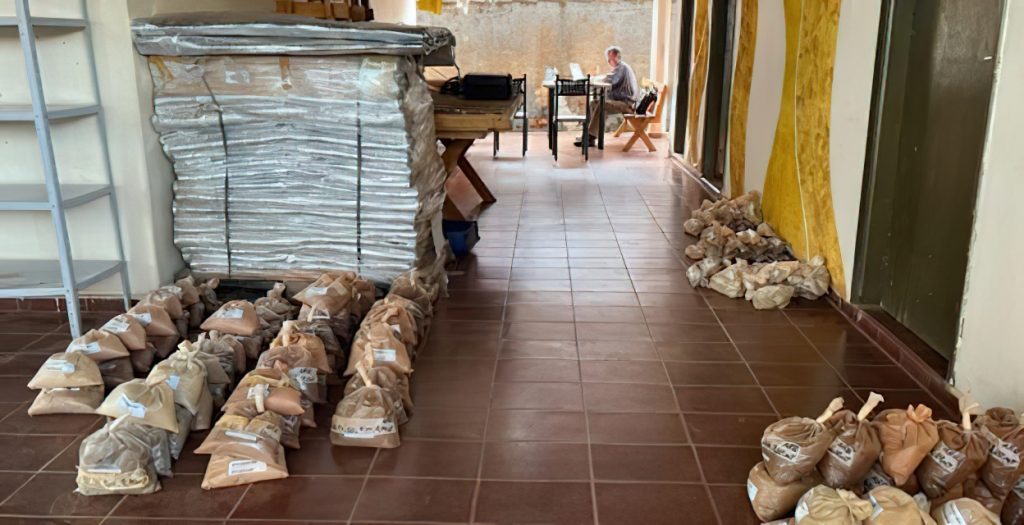Appia Rare Earths intersects 2.72% TREO over 24 metres at PCH, Brazil

Appia Rare Earths & Uranium Corp. [CSE-API; OTCQX-APAAF] has further delineated the SW extension zone, a significant high-grade rare earth elements (REE) mineralized zone located in the southwest (SW) corner of the Target IV zone at the PCH project, Goias state, Brazil. This discovery spans an area of over 1,000 metres by 500 metres, with an average thickness of approximately 19 metres, and builds on the previously announced remarkable PCH-RC-63 results.
Highlights: High-grade SW extension zone: 10 reverse circulation (RC) holes with a total weighted average of 7,578 parts per million (ppm) or 0.76% total rare earth oxide (TREO), including 1,744 ppm, or 0.17%, magnet rare earth oxide (MREO), 416 ppm, or 0.04%, heavy rare earth oxide (HREO) and 7,162 ppm, or 0.71%, light rare earth oxide (LREO). The SW extension zone currently spans approximately 0.5 km2 with average hole depths of 19 metres – all open at depth.
Highest-grade RC and auger hole (AH) intercepts: PCH-RC-067 from surface to 11 metre EOH (end of hole): 24,309 ppm, or 2.43% TREO, 5,717 ppm, or 0.57%, MREO, 1,452 ppm, or 0.15%, HREO and 22,857 ppm, or 2.29% LREO.
PCH-RC-066 from surface to 13 m EOH: 12,858 ppm, or 1.29%, TREO, 2,789 ppm, or 0.28%, MREO, 524 ppm, or 0.05%, HREO and 12,334 ppm, or 1.23%, LREO.
PCH-RC-063 from surface to 24 m EOH: 27,188 ppm, or 2.72%, TREO, 6,293 ppm, or 0.63%, MREO, 1,369 ppm, or 0.14%, HREO and 25,819 ppm, or 2.59% LREO.
Two auger holes have a total weighted average of 10,249 ppm, or 1.02% TREO, including PCH-AH-29 from surface to seven m EOH: 4,122 ppm, or 0.41% TREO, 1,066 ppm, or 0.11% MREO, 361 ppm, or 0.04% HREO and 3,762 ppm, or 0.38% LREO.
PCH-AH-30 from surface to seven m EOH: 16,375 ppm, or 1.64% TREO, 2,955 ppm, or 0.30% MREO, 457 ppm, or 0.05% HREO and 15,918 ppm, or 1.59% LREO.
“We believe that the high-grade nature of the SW extension zone, which contains magnet rare earth oxides sample values of up to 13,212 ppm, or 1.32% places this discovery on a global stage. The fact that all of these holes are still open at depth creates an opportunity to discover additional mineralization at depth,” stated Tom Drivas, CEO.
“Appia’s work with exploratory auger drilling has delivered compelling results, particularly when the 2023 auger holes PCH-AH-29 and PCH-AH-30 are included, which returned a total weighted average of over 10,000 ppm, or plus-1% TREO over seven metres of depth,” noted Stephen Burega, president. “Follow-up RC drilling successfully expanded the overall total depth of the high-grade mineralization to an average of approximately 19 metres across this zone, and we’ve observed mineralization throughout the length of all RC and auger holes. For instance, holes PCH-RC-063 with a total depth of 24 metres and PCH-RC-067 with a total depth of 11 metres, each yielded grades exceeding 24,000 ppm, or 2.4% TREO and over 5,000 ppm, or 0.5% MREO at the bottom of each drill hole.”
The lateral extension and the depth of the SW extension high-grade zone has not been fully tested, and the company eagerly awaits results from the remaining seven RC holes drilled within this new zone, in addition to the numerous RC drill holes to the south located outside of the target IV boundary. Target IV encompasses 1,702 hectares, with the SW extension zone occupying about 50 hectares. In total, the PCH project spans 17,551 hectares.
